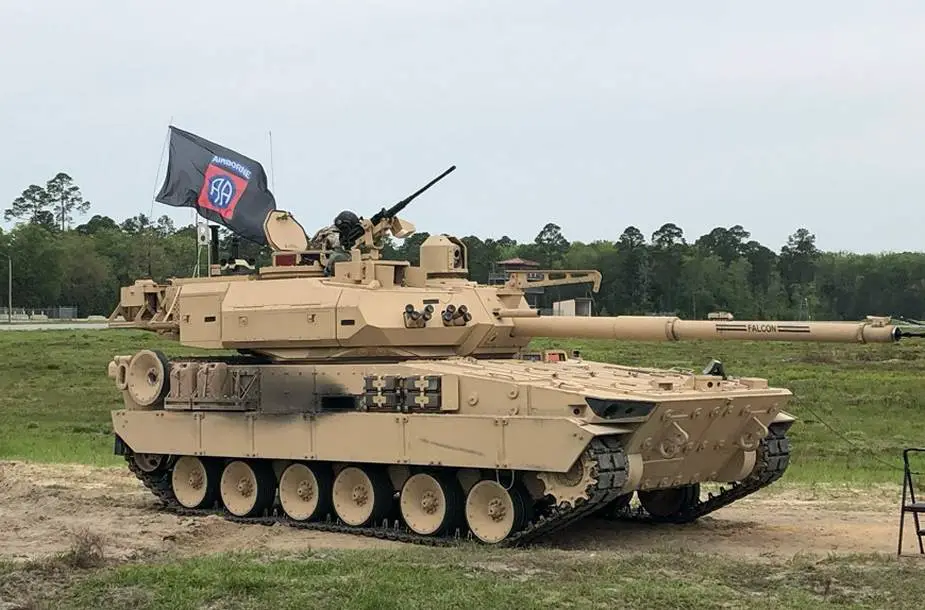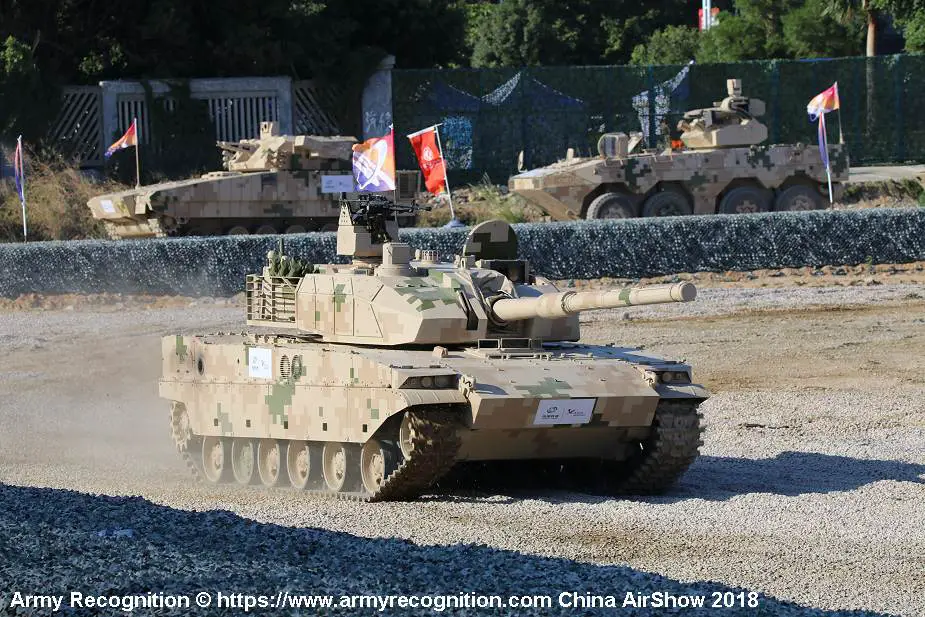Breaking news
India to roll out 1st prototype of mountain light tank by 2023.
The development of light tanks for the Indian Army was announced by the Modi government on March 3, 2022. This move was made under the Make-I category of the 2020 Defence Procurement Procedure (DPP). India’s search for a light tank could end soon as L&T revealed that it is a partner in the ‘Zorawar Program’ aimed at building light tanks for the Indian Army, with the first prototype expected to be unveiled in late 2023, Ashish Dangwal reports in The Eurasian Times.
Follow Army Recognition on Google News at this link

A source of inspiration for India? MPF (Mobile Protected Firepower) will provide U.S. infantry brigade combat teams with greater survivability, and the ability to identify threat systems earlier and at greater distances (Picture source: General Dynamics Land Systems)
Having long been looking for a light tank, the Indian Army recently began Project Zorawar (roughly translated as “project powerful”), which calls for the introduction of indigenous light tanks adapted to operations in high-altitude zones. The Indian Army is looking for a light tank with a 25-ton weight limit and the same firepower as its traditional tanks. In addition, the military wants them to be equipped with loitering weapons, artificial intelligence (AI), tactical drone integration for surveillance to offer situational awareness, and an active defense system, Ashish Dangwal reports.
L&T is now selected as a development partner for the homegrown light tanks, according to Jayant D Patil, senior executive vice-president for the defense at L&T, who made this statement to Janes on September 16. As reported by Ashish Dangwal, while the company is involved in the platform’s development, he said that L&T is not assured a role in the tank’s production phase. Patil explained that under the Indian process, development and manufacturing contracts could not be combined: “Developed equipment has to undergo field evaluation trials and emerge successful for the induction clearance, and then [the] production ordering process begins,” he added.
Patil did not go into detail about L&T’s involvement in the project, Ashish Dangwal comments. However, the company is working with the state-owned organization on the development project: “We [DRDO and L&T] are planning to disclose a prototype by the end of 2023,” the source added. The project is overseen by the Combat Vehicles Research and Development Establishment(CVRDE) of the DRDO.
As widely known, the Indian Army wants to get light tanks to counter China in high-altitude areas like Ladakh. After the border conflict with China in the summer of 2020, India initially considered purchasing the Russian light tank Sprut SDM1 but the move did not go further.
A Request for Information (RFI) for 350 light tanks in the 25-ton weight category was released by the Directorate General of Mechanized Forces in April 2021 on behalf of the Ministry of Defence (MoD), Ashish Dangwal reports. However, the country has now decided to develop its own light tank rather than import them. But the production and upkeep of India’s imported fleet of tanks had been impeded by the interruption in the world supply chain for defense-related components caused by the ongoing Russia-Ukraine war. India must therefore create its own light tank.
Indian Army’s Lt Col JS Sodhi (Retd) told the EurAsian Times: “Light tanks can tremendously enhance the combat potential in the High Altitude Areas (HAA) as they can be tailor-made to the existing infrastructure like bridges and roads and will have great maneuverability to give a better combat edge to the Indian Army.”
The Russian-origin T-90S Bhishma and T-72M1 Ajeya tanks weigh about 46 tons. Arjun Mk.1A, India’s indigenous main battle tank, weighs around 68.5 tons. These tanks are not adapted to high-altitude regions. China, on the other hand, operates many modern tanks that are employed in combat as a blend of medium and light tanks with high power-to-weight ratios.
In the last two years, Beijing has positioned the most recent ZTL-11 wheeled armored personnel carriers, CSK series assault vehicles, and ZTQ 15 (Type 15) third-generation modern light tanks along the LAC in Eastern Ladakh.

Chinese-made VT5 light tank in a live demonstration at Air Show China 2018. A tank typically adapted to operations at high altitudes(Picture source: Army Recognition)
VT5, the Chinese 'adversary' of India's future light tank
The VT5, also named Type 15 or ZTQ-15 in the Chinese army, is a lightweight battle tank designed and manufactured by the Chinese defense company NORINCO (China North Industries Corporation). The VT5 was unveiled to the public during the Zhuhai AirShow China in November 2016.
The main armament of the VT5 consists of one 105 mm rifled gun with a thermal sleeve and fume extractor which has a maximum firing range of 3,000 m. The main armament also includes an automatic loading system. The VT5 carried a total of 38 rounds of 105mm ammunition which can include Armour-Piercing Fin-Stabilized Discarding Sabot (APFSDS), High-Explosive Anti-Tank (HEAT), High Explosive (HE), and gun-launched anti-tank guided missile. The missile has a maximum range of 5,000m and is fitted with a tandem HEAT (High Explosive Anti-Tank) warhead able to destroy armored or tanks protected with reactive armor (ERA).
The hull and the turret of the VT5 are made with all-welded steel armor which provides stand protection against the firing of small arms and shell splinters. To increase the protection, the VT5 can be equipped with advanced composite armor and/or explosive reactive armor (ERA).
The VT5 is motorized with a 1,000 hp electronically controlled diesel engine mounted at the rear of the hull. and coupled to a hydro-mechanical full automatic transmission with a pivot steering capability and a cooling system. It can run at a maximum road speed of 70 km/h, 35 to 40 km/h in off-road conditions with a maximum cruising range of 450 km.

























